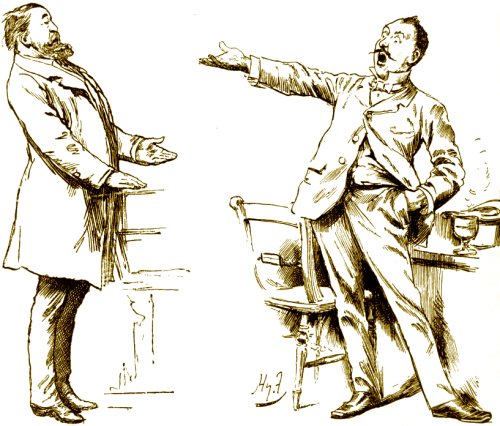
When a speaker fails to answer your question, you have two choices, depending on the situation.
- Stop everything until you get your answer or a clear acknowledgment that your question will not be answered. Silence can be golden at these opportunities. Most of us are uncomfortable with silence. An individual may feel compelled to answer a difficult question if you remain silent after posing the question. “The next one who speaks loses.”
- Bide your time and ask the question later. If the question was worth asking in the first place, it’s worth asking again. Which of these two techniques you use depends on the situation. If the situation is fast paced and the information you requested is fundamental to decision making, use the first technique. You can choose the second technique (to bide your time) whenever you know that you’ll have another opportunity to get the information, and you don’t need the information right away. Biding your time is always easier and less confrontational, but if you really need a piece of data, don’t be afraid to say, “Wait, I need to know. . . .” A good way to handle someone who doesn’t answer your question is to make a little joke out of the situation with a statement such as, “You’re leaving me in the dust,” or “I need to catch up.” No matter how serious the subject matter of the negotiation, a little humor never hurts, especially if you don’t spare yourself as a subject of that humor.
If the person makes a little joke back to avoid the question, you may have to shift back to a serious mode. Persevere until you either get an answer to your question or you realize that you must go elsewhere. If the other party isn’t going to answer your question, make a note of that fact so you remember to use other resources to get the answer you need.






 Politicians, as a group, seem specially trained to provide anything but an answer when asked a question. It’s almost as though there is some secret college for Congress members where they go to learn about the artful dodge. Just tune into the Sunday morning shows that feature our elected representatives. For example, if someone asks about the state of public education, the representative may launch into a dissertation about family values. It’s odd how many interviewers let elected officials get away with avoiding questions Sunday after Sunday. You don’t have to do that. Don’t accept the dodge when you ask a question. Recognize this tactic for what it is and repeat the question, this time insisting on a real answer or an exact time when you can expect an answer. When people say that they have to look into something and get back to you, about the only thing you can do (without making a rather obvious and frontal assault on their honesty) is wait. However, you can nail them down to a specific date and time that they will “get back to you.” If the question is important enough for the other side to delay (or not answer at all), the issue is important enough for you to press forward. Asking, “When can I expect an answer from you?” is a direct way of obtaining that information. Be sure to make a note of the reply.
Politicians, as a group, seem specially trained to provide anything but an answer when asked a question. It’s almost as though there is some secret college for Congress members where they go to learn about the artful dodge. Just tune into the Sunday morning shows that feature our elected representatives. For example, if someone asks about the state of public education, the representative may launch into a dissertation about family values. It’s odd how many interviewers let elected officials get away with avoiding questions Sunday after Sunday. You don’t have to do that. Don’t accept the dodge when you ask a question. Recognize this tactic for what it is and repeat the question, this time insisting on a real answer or an exact time when you can expect an answer. When people say that they have to look into something and get back to you, about the only thing you can do (without making a rather obvious and frontal assault on their honesty) is wait. However, you can nail them down to a specific date and time that they will “get back to you.” If the question is important enough for the other side to delay (or not answer at all), the issue is important enough for you to press forward. Asking, “When can I expect an answer from you?” is a direct way of obtaining that information. Be sure to make a note of the reply.

 Unlike simple yes-or-no questions, open-ended questions invite the respondent to talk — and enable you to get much more information. These are the types of questions to use when you want to find out a person’s opinion or gather some facts during the course of a negotiation. The more you get the other person to talk, the more information you learn. Yes-or-no questions limit choices and force a decision. These types of questions are called closed questions.
Unlike simple yes-or-no questions, open-ended questions invite the respondent to talk — and enable you to get much more information. These are the types of questions to use when you want to find out a person’s opinion or gather some facts during the course of a negotiation. The more you get the other person to talk, the more information you learn. Yes-or-no questions limit choices and force a decision. These types of questions are called closed questions.

